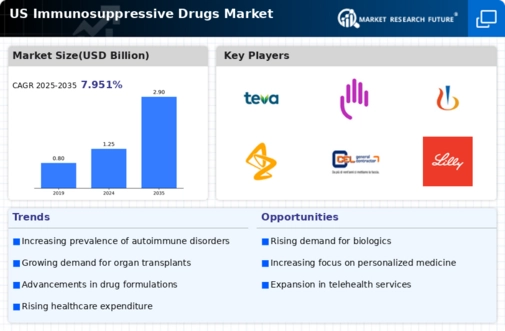The US Immunosuppressive Drugs Market is characterized by rapid growth and increasing competition among pharmaceutical companies due to the rising prevalence of autoimmune diseases and organ transplant procedures that necessitate immunosuppressive therapy. The competitive landscape is marked by innovation in drug development, as companies strive to introduce advanced therapies that overpower conventional treatments.
This market is further driven by the evolving regulatory framework that encourages the development of generics and biologics, reshaping traditional market dynamics. Firms are engaged in strategic collaborations, acquisitions, and research investments to enhance their product portfolios and capture a larger market share, leading to a continually evolving competitive environment.
Teva Pharmaceutical Industries has established a strong foothold in the US Immunosuppressive Drugs Market, leveraging its extensive experience in generic and specialty pharmaceuticals. The company's robust pipeline includes a range of immunosuppressive therapies that cater to both autoimmunity and transplant needs. Teva's strengths lie in its high-quality production capabilities and a well-diversified portfolio, which enhances its ability to meet varied patient demands in a competitive landscape.
Additionally, the company's commitment to research and development has facilitated the introduction of cost-effective alternatives to high-priced branded medications, making it a significant player in the market while contributing to patient accessibility and affordability. Bristol Myers Squibb has made substantial contributions to the US Immunosuppressive Drugs Market with its innovative product offerings and a strong focus on areas such as renal transplantation and autoimmune disorders.
The company’s comprehensive portfolio includes key products that address critical health needs, thereby reinforcing its market presence. Bristol Myers Squibb's strategic strengths are evident in its focused research initiatives, which aim to develop next-generation therapies that provide better efficacy and safety profiles compared to existing options. Moreover, the company has actively pursued mergers and acquisitions to bolster its capabilities and therapeutic breadth, further consolidating its position in the market.
Its emphasis on high-quality clinical research and patient-centered solutions underlines its commitment to advancing the field of immunosuppression in the United States, addressing both existing challenges and future opportunities.























